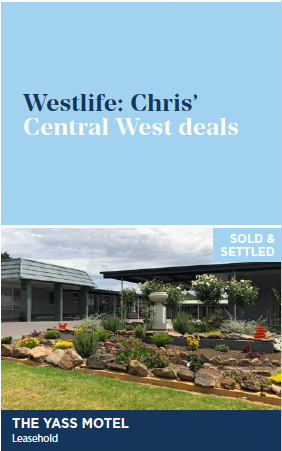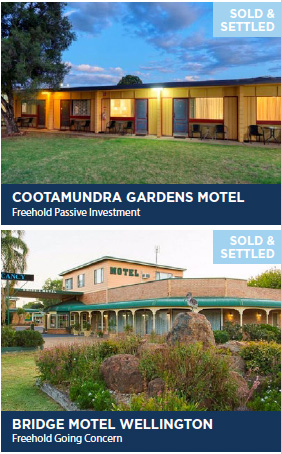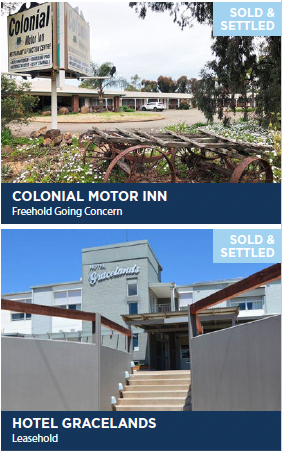20 Nov 2023
Words
Chris Kelly Informer 109
Bouncing Back
Since I joined ResortBrokers at the end of 2019, the area I serve, NSW’s Central West, has been kicked in the guts. I’d prefer to be talking about the region’s positives (and there are plenty), but first I have to acknowledge the pain this part of the world has experienced of late. There was a record-breaking drought, followed by catastrophic bushfires, followed closely by Covid, and then, more recently, devastating floods.
This most recent natural disaster was devastating to our industry. Significant damage to roads and transport infrastructure meant people stopped coming to the region. They simply couldn’t get here. That includes professionals and, perhaps more importantly, holidaymakers during the crucial Christmas period.
Then add inflationary pressures and we have a truly struggling industry. While occupancy is soaring, so are operational costs. Many hotel businesses are treading water as they’ve seen little to no improvement on last year’s net profit.
But now for the good news. The tide is turning. Repairs to roads, properties and businesses are well underway and our resilient region is bouncing back. We’re now enjoying larger occupancies than in previous years.
I service around 360 hotel businesses across Central West NSW and have had the pleasure of greeting a great many operators. There’s a tremendous community spirit and culture of looking out for your neighbours that comes second nature to the people of this region. We saw the best of that community spirit come to the fore in the floods with people mucking in to help one another.
If the recent past is dim, the future is bright. I wouldn’t have made my home here if I thought otherwise. I’ve been based in Bathurst for the last 12 years and with my wife we are raising my two children here. The Central West has so much going for it and so much growth ahead of it.
“NSW’s Central West has so much growth ahead of it.”
The region is a natural resources powerhouse with agriculture and mining being the two main economic drivers. There’s also a big push for clean energy, particularly with the Orana Renewable Energy Zone project near Dubbo.
I get to see so much of this development in my weekly travels around the region. My patch is huge, around 63,000sq km, and starts at the base of the Blue Mountains, then up to Mudgee, than all the way up to Bourke on the border, then up to Broken Hill on the border again, then back down to Griffith and across to Yass and back up to Lithgow.
Each area is different. That’s why it’s important as a broker to understand each city, town and district and their occupancy drivers. Orange, Mudgee and the Mount Panorama region are tourist hotspots where white collars go for weekend getaways. Dubbo, the largest regional city in NSW, is different altogether. It gets some guest traffic from Sydney, particularly families heading to the Western Plains Zoo. But it also attracts farming families from further afield who venture into town once a month or once a quarter to see their accountant, doctor and dentist and that can mean staying in town for a week or more. It has a pull factor for locals from the towns around it like Bourke, Cobar and Nyngan.
Dubbo also has a developing manufacturing base. Maas Group is a great Dubbo success story. The company started with a single excavator and is now developing housing estates and is venturing into electrical, manufacturing and steelmaking.
Parkes is one of the fastest growing regional areas in NSW. It has had a huge amount of infrastructure spending in the last 15 years, which includes an inland rail upgrade and a road bypass in the pipeline. Add two new mines, a cold-room storage development and an abattoir opening, and you got solid occupancy drivers for hotels.
Cowra, down the road from me in Bathurst, has a huge amount of manufacturing, as well as an abattoir. It’s also a pass-through town for people coming from Victoria, South Australia and Queensland. Cootamundra, Morah, Yass and Junee get passers through and grey nomads. West Wyalong has a brand-new gold mine, which will be a net positive for the area for the next 20 years.
“Each area has different occupancy drivers.”
Then there’s Warren, which is just over an hours’ drive from Dubbo. Australian-based Macquarie Group, the world’s largest infrastructure asset manager, has large agricultural holdings in Warren, which is an enormous show of confidence in this grain-producing region.
And how’s the current market looking? Well, the Central West is a bit of a barometer in terms of the national accommodation sector as to where yields are relative to the economy.
A couple of years ago, I was selling properties at tight yields before any of my colleagues in other parts of ResortBrokers’ national network. I was also the first to see yields move back to where they had been.
The market in my patch is starting to come to life again. Properties are coming back to market but yields and cap rates have moved more to the buyers’ side. Banks are still lending and there’s limited stock, which gives purchasers a little more room to negotiate.
No doubt about it, we’ve been kicked around in the past few years. But I believe we’ve turned the corner. We have lower-priced leaseholds in huge demand and more buyers than properties. Freehold going concerns at yields between 13-15 per cent are in huge demand. We’re currently selling in all markets and I’m expecting big things for rest of FY24.
The Central West is back. END

Chris Kelly, Broker
0431 055 221
chris@resortbrokers.com.au



